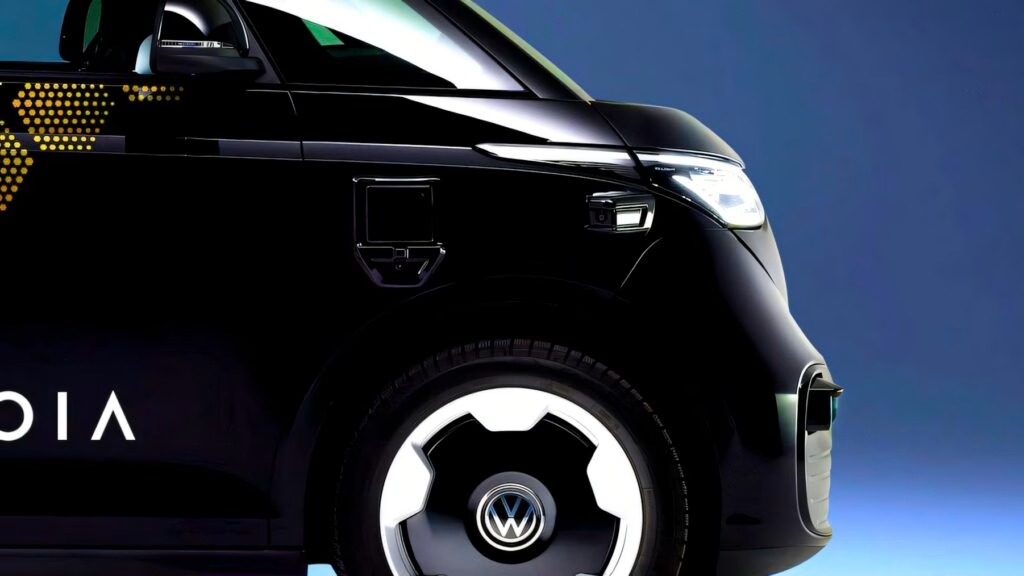Volkswagen’s MOIA brand has officially rolled out the production version of the ID. Buzz AD, a significant step in the evolution of autonomous electric vans. This vehicle is not just another addition to the electric vehicle market; it represents a bold move towards reshaping urban mobility in Europe and the United States.
What Makes the ID. Buzz AD Stand Out?
At the heart of the ID. Buzz AD is Mobileye’s cutting-edge self-driving technology, complemented by an impressive array of 27 sensors, including 13 cameras, nine LiDARs, and five radars. This setup provides a comprehensive 360-degree view of the vehicle’s surroundings, ensuring enhanced safety and reliability. The vehicle is designed as a turnkey solution for cities and fleet companies, making it an attractive option for those looking to implement autonomous mobility services.
A key differentiator from competitors like Tesla’s Robotaxi is the target market. While Tesla aims to cater to individual passengers through ride-hailing services, the ID. Buzz AD is primarily focused on corporate customers and mobility providers. This strategic choice positions Volkswagen to tap into a growing demand for fleet services, particularly in urban environments where public transport solutions are increasingly sought after.
Innovative Features for Modern Mobility
The ID. Buzz AD isn’t just about autonomous driving; it also boasts a range of features designed for user convenience and comfort. The vehicle’s extended wheelbase and raised roof create a spacious interior, which includes four passenger seats and intuitive boarding via smartphone. Passengers can unlock the vehicle using their devices, streamlining the boarding process.
Inside, the van is equipped with a revamped interior featuring wood-like flooring, large grab handles, and essential buttons for SOS, support, and start/stop functions. Interestingly, it retains a driver’s seat and a steering wheel, albeit covered in cloth camouflage. This suggests that while the vehicle is designed for autonomous operation, it can still accommodate a safety driver if necessary.
The removal of the front passenger seat and center console opens up additional storage space, making it practical for carrying luggage or other items. This thoughtful design reflects a commitment to enhancing the user experience.
The Autonomous Driving System: A Closer Look
The real game-changer here is the autonomous driving system. MOIA has integrated a proprietary Autonomous Driving Mobility as a Service (AD MaaS) Ecosystem Platform, which allows for rapid deployment of autonomous services. This system is tailored for both public and private mobility providers, offering a comprehensive package that includes advanced technology, fleet management solutions, and a user-friendly booking system—all from a single source.
Volkswagen Group CEO Oliver Blume has indicated that the rollout of the ID. Buzz AD is set to begin in 2026, pending regulatory approval. This timeline aligns with the company’s vision of becoming a leader in sustainable, autonomous mobility, marking a significant milestone in the automotive industry.
What Lies Ahead for Autonomous Mobility?
As the competition heats up in the autonomous vehicle space, the ID. Buzz AD positions Volkswagen as a formidable player. With the rise of electric and autonomous vehicles, cities are increasingly looking for innovative solutions to address urban mobility challenges. The ID. Buzz AD’s focus on fleet services could play a crucial role in shaping the future of public transportation.
The big takeaway? The race for autonomous mobility isn’t just about who gets there first; it’s about creating smarter, more efficient solutions for urban living. As Volkswagen prepares to launch the ID. Buzz AD, it’s clear that the future of transportation is not just electric—it’s autonomous, and it’s designed with the needs of cities and communities in mind.

